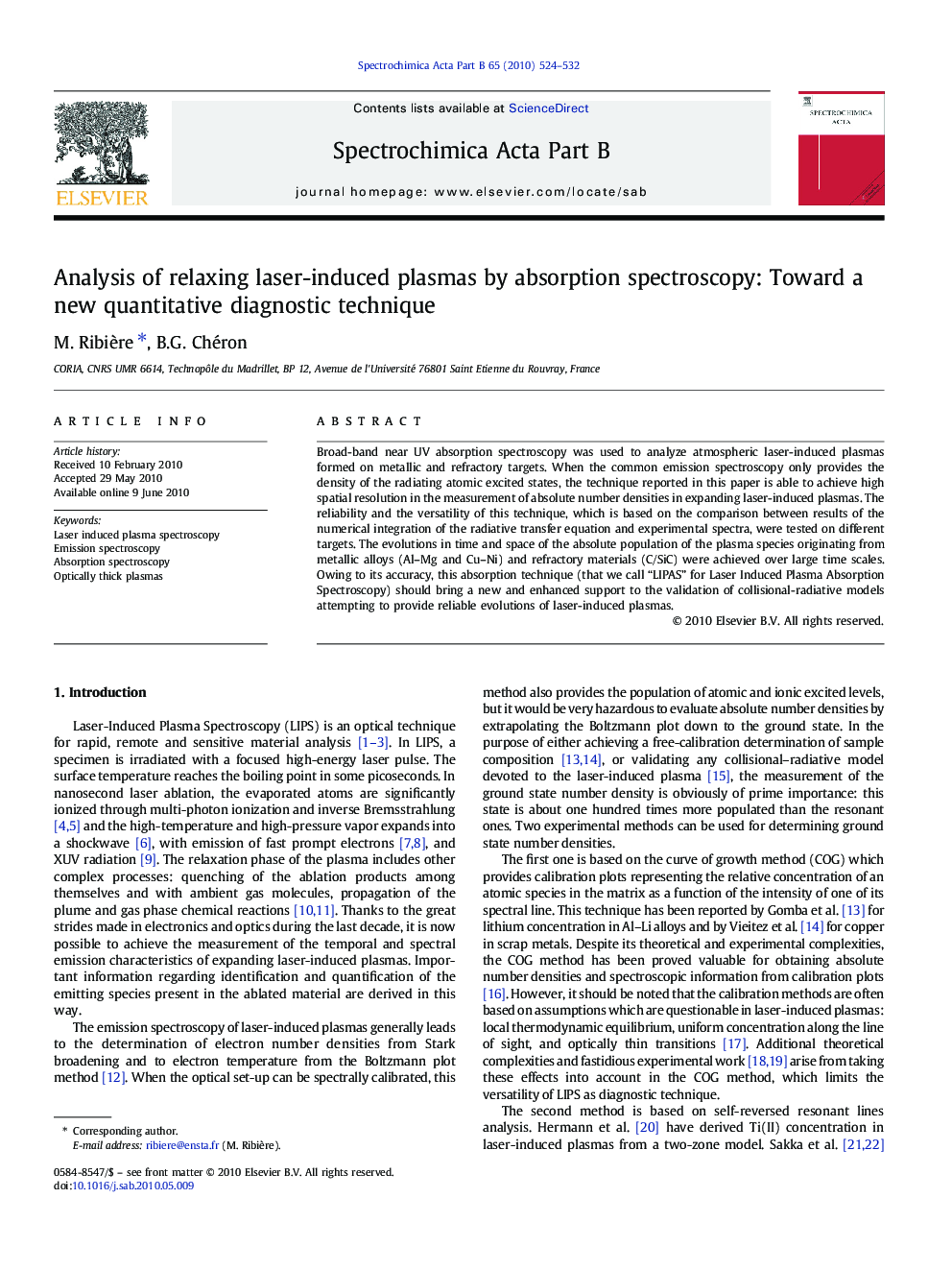| Article ID | Journal | Published Year | Pages | File Type |
|---|---|---|---|---|
| 1240426 | Spectrochimica Acta Part B: Atomic Spectroscopy | 2010 | 9 Pages |
Broad-band near UV absorption spectroscopy was used to analyze atmospheric laser-induced plasmas formed on metallic and refractory targets. When the common emission spectroscopy only provides the density of the radiating atomic excited states, the technique reported in this paper is able to achieve high spatial resolution in the measurement of absolute number densities in expanding laser-induced plasmas. The reliability and the versatility of this technique, which is based on the comparison between results of the numerical integration of the radiative transfer equation and experimental spectra, were tested on different targets. The evolutions in time and space of the absolute population of the plasma species originating from metallic alloys (Al–Mg and Cu–Ni) and refractory materials (C/SiC) were achieved over large time scales. Owing to its accuracy, this absorption technique (that we call “LIPAS” for Laser Induced Plasma Absorption Spectroscopy) should bring a new and enhanced support to the validation of collisional-radiative models attempting to provide reliable evolutions of laser-induced plasmas.
